
Featured Blog | This community-written post highlights the best of what the game industry has to offer. Read more like it on the Game Developer Blogs or learn how to Submit Your Own Blog Post
How to Crack the Match 3 Code?- Part 4: Project Makeover
A data driven look at match 3 puzzle genre's state of play in 2020 and how closely we predicted the rise of "Project Makeover",the latest new Meta Match 3 game topping the charts on app store.


There is a new Match 3 on the block and it’s taking on casual games genre with both guns blazing! You (the reader) shouldn’t act surprised, though. The previous 3 articles in this series have been consistently forecasting that any new chart busting contender in Match 3 space was highly likely to be led by fashion & make up metas which was built on what we identified as the four “Must have” key design pillars of modern day meta Match 3 games.
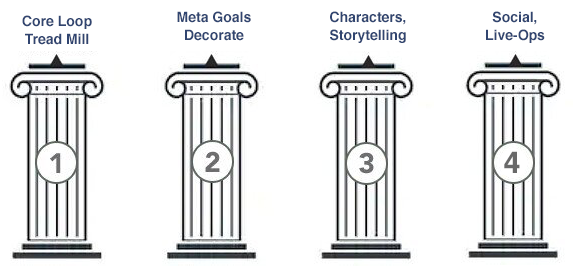
Magic Tavern/AppLovin’s latest fashion meta based “Project Makeover” does exactly that and even more! It goes beyond the framework of Classic and Meta Match 3 sub divided by being the first in its class of Meta Heavy Match 3 aka a MHM3 Game. But more on this later.
There is a lot of bold experimentation going on in this game which we will dive in to but first let’s glimpse into what 2020 looked like for the entire Match 3 genre.
Match 3 Genre: State of Play 2020
Buoyed by the 2020 lockdown blues, casual games generated the most revenue on mobile a mammoth $9.8B, of which a beastly $3.7B was generated by Match 3 games alone. Overall, the pie just kept on growing.
Image Source: Deconstructor of Fun
What are the numbers telling us?
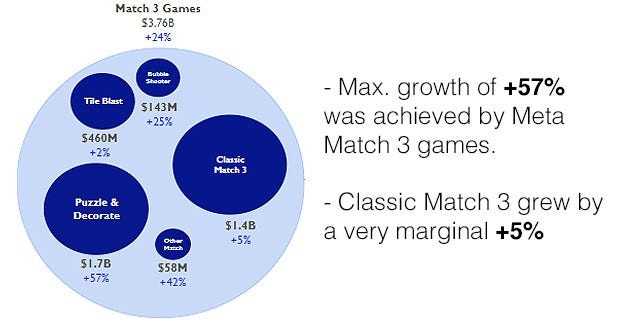
Image Source: Deconstructor of Fun
While meta match 3 sub-genre made long strides with impressive double digit YoY growth, numbers look marginal for classic/saga style Match 3 games.
Despite a COVID uplift of up to 30% revenue in almost every genre, Classic Match 3 registered a very marginal +5% YoY growth (Compared to +57% for Meta games). Which implies they could have seen a negative growth trend had it not been for the COVID effect.
Overall trend still points towards declining revenue for classic Match 3. We have seen stop gap measures from classic Match 3 publishers more heavily utilising the ad monetisation model to monetise their massive veteran player base. But here is the deal, focussing solely on ad revenue over IAP’s leaves a lot of money on the table and may not hold water in the long run. This can be vouched for by Playrix, who become the biggest publisher by IAP revenue in Match 3 space in 2020, a feat achieved by focussing heavily on meta, social, Live-Ops and UA driven premium content for it’s player base.

Image Source: Deconstructor of Fun
This decline is further cemented by the fact that we have not seen any chart busting new entrant on the classic Match 3 side for quite some time now, yet the competition, experimentation and heat seems to be building up on Meta Match 3 side year over year. We covered the Red vs Blue ocean analogy in our last article.

As the Red ocean of classic Match 3 comes to a boil, opportunities await in the uncharted Blue ocean on Meta Match 3 side.
Predicting the DNA of next “Top of the charts��” Match 3 game?—Did we get it right?
This specific article series for last 4 years has been focussed on analysing Product, UX & Game Design based quantitative and qualitative data trends to accurately predict where this genre is heading and what the DNA of any new potential genre-shaking games would look like.
Appearing on the scene out of the blue in November 2020, “Project Makeover” seems to be one such early realisation of those forecasts!
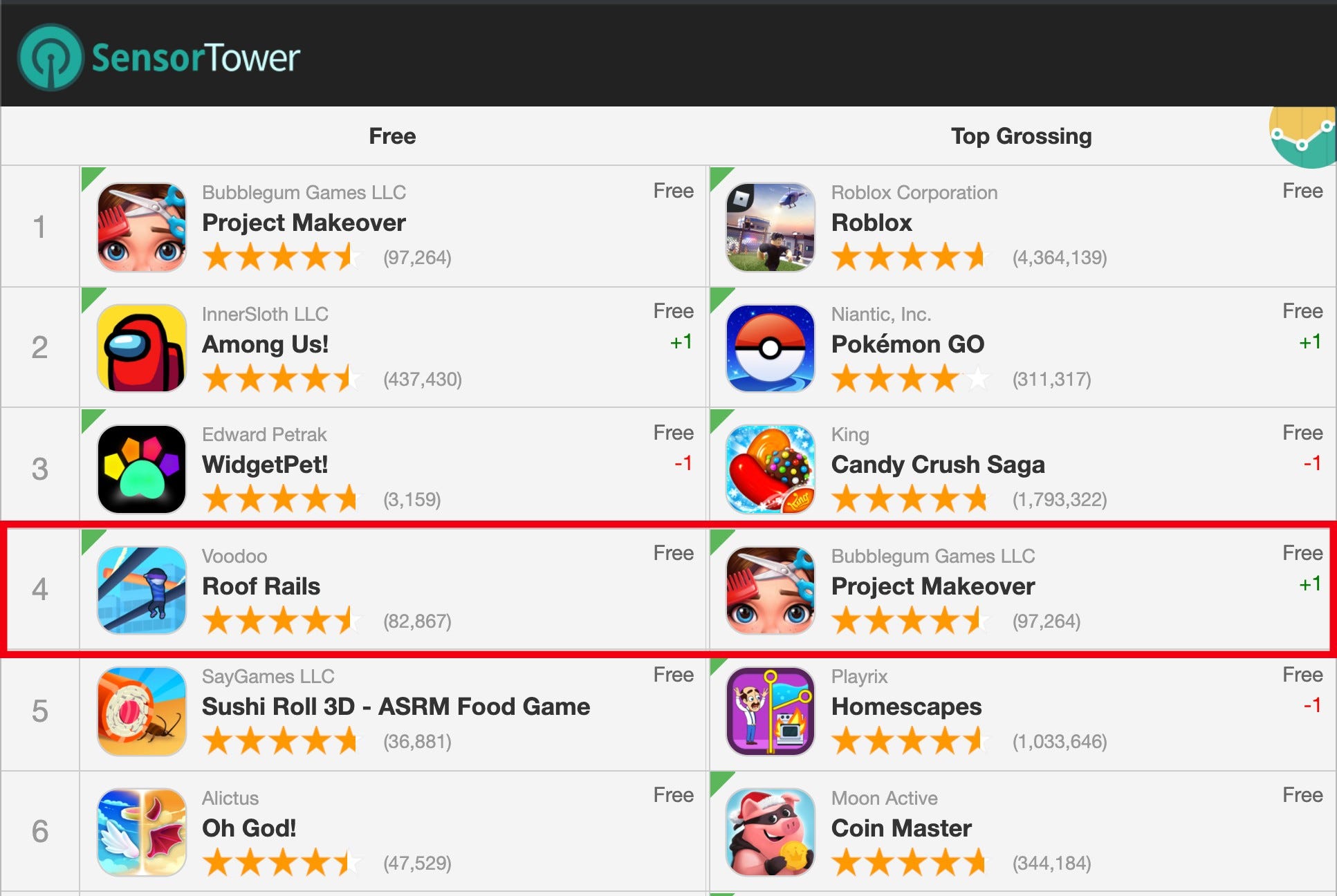
Since its launch in November 2020, Project Makeover has been moving up the ladder and sitting proud in the top 6 grossing charts, brushing shoulders with the likes of CCS and Homescapes.
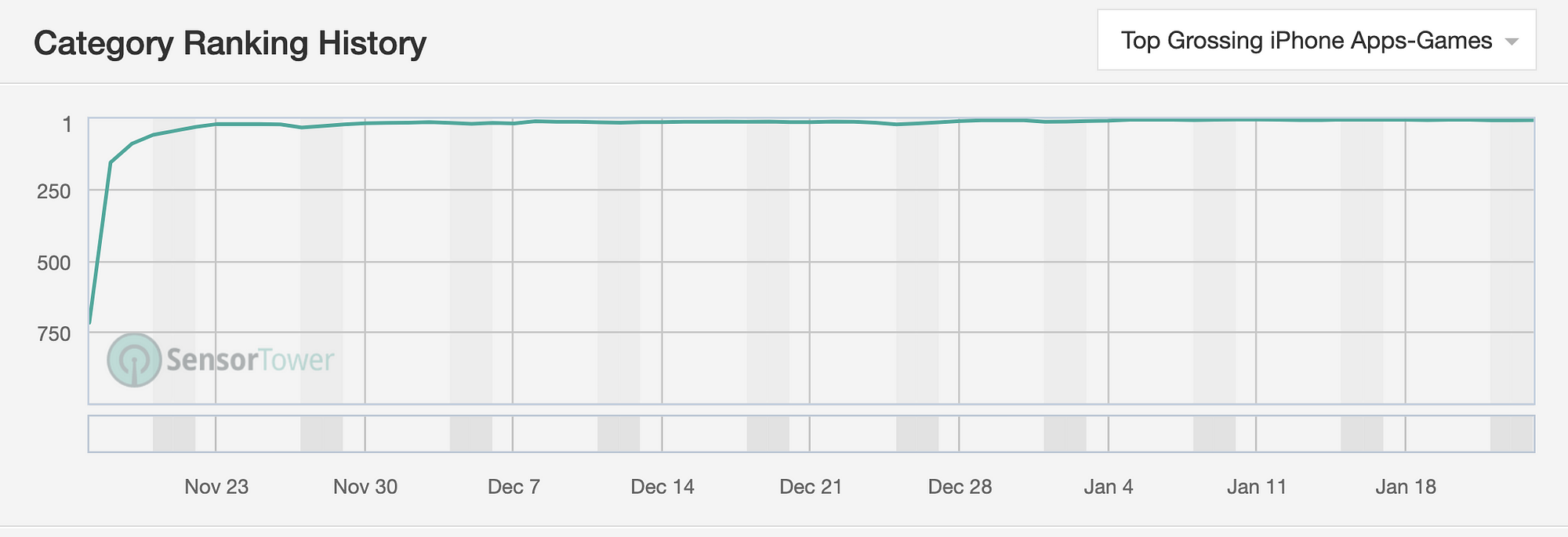
In early 2020, I started this series with the following quote:
Finding success in mobile games in 2020 is way more science than art. It is no longer about where the ball is right now, but rather where the ball is going… In 2021 we are already seeing this come to fruition!
In fact in this 4 parts series focussed throughout 2020 on where the ball is going :). Let’s begin by recap of the some of the key data (UX, Product, GD) driven trends we forecasted in the previous articles of this series, and how they align with meteoric rise of Project Makeover (Click here for parts 1, 2 & 3).
Key Forecast #1: July, 2020
In Part 2 of this series written in July, 2020, I touched on current barriers to entry given the Red ocean marketplace that Match 3 genre has become and in order to break the gridlock, how developers will have to experiment. Summary from that article below:
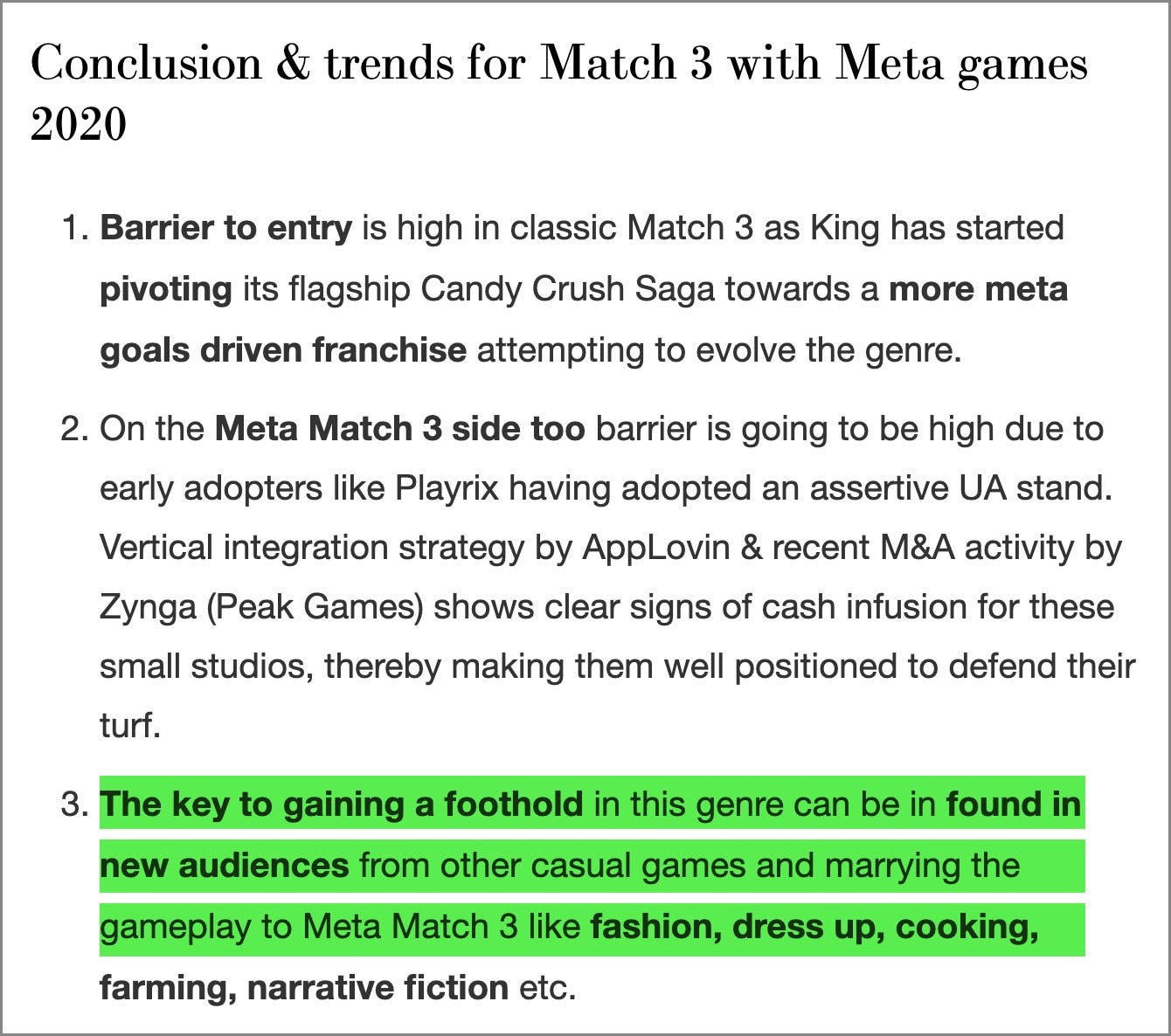
* Above are the conclusions from the second article published in July, 2020
Project Makeover hits the bulls eye when it comes to realisation of this forecast. It’s deeply rooted in fashion led Meta theme which combines the elements of dress up, makeover and decoration all together. Bringing in flocks of new player audiences who love fashion, dress up and make over games thereby widening existing player funnel.
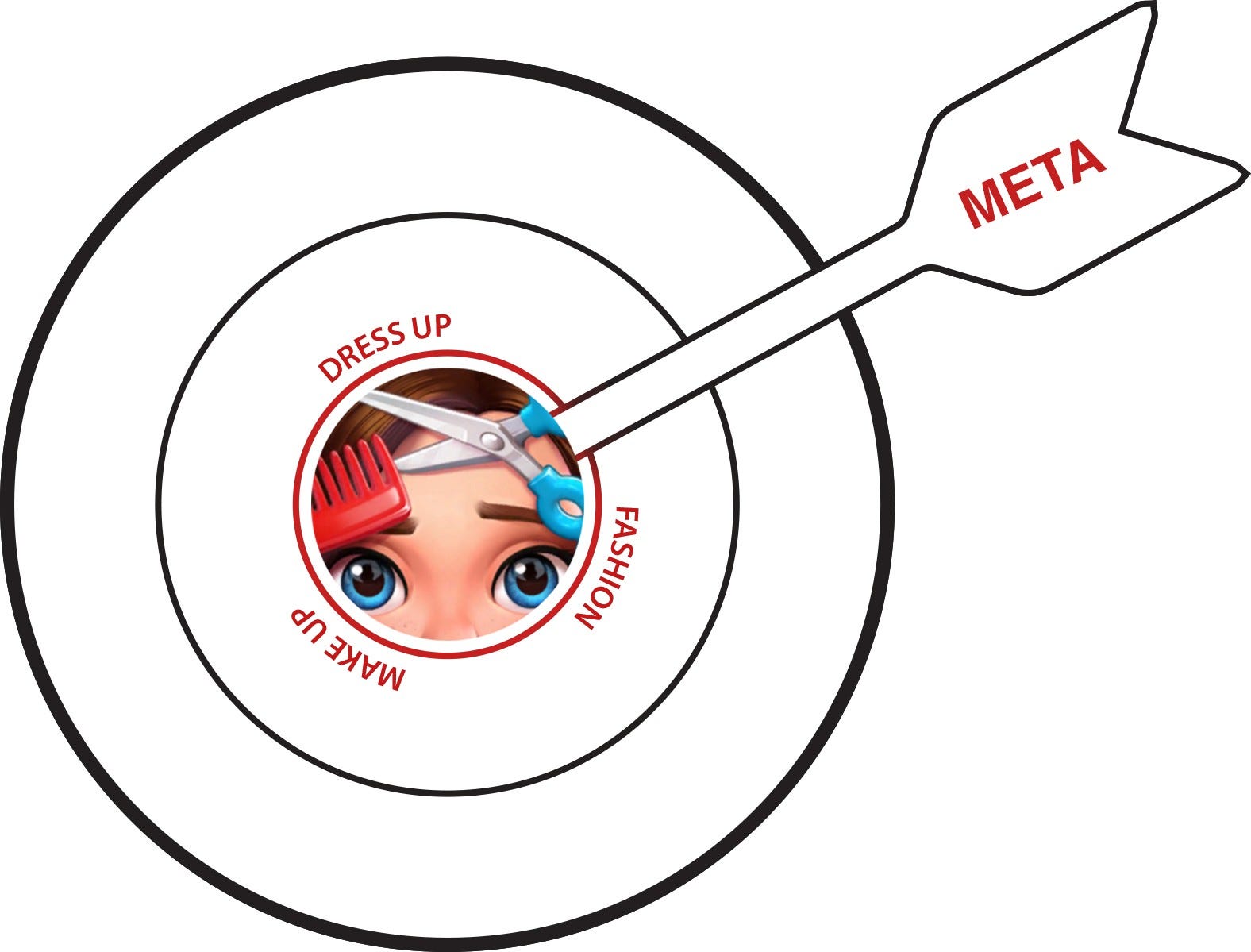
But let’s dwell a bit more on why finding these new audiences is important ‘specially’ for Match 3 games?
Any Match 3/Casual game in general needs relatively large number of downloads to reach substantial monetisation compared to more niche “Strategy” games as the LTV (Life time value) of casual players is relatively very low compared to LTV of strategy game players. Also implying the DAU of Casual games needs to be relatively very large compared to Strategy games.
A well executed strategy game can make decent revenue from a player pool of even just 3 to 5 million players and a relatively smaller DAU, while this number needs to be at least 10x for a casual game to generate the same amount of revenue. As seen in the example below, monthly revenue figure of a top 18th grossing “casual” game is way below the revenue of a top 18th grossing “strategy” game.

Property Brothers vs Age of Z revenue comparison, Top 18 grossing: Casual vs Strategy.
Casual game players are less loyal too, purely because they have the time to play more than one casual game unlike strategy gamers whose time commitments are fully occupied by the demands and depth of the game they are playing. This allows niche strategy games to thrive based on IP, genre, fantasy, sci-fi, military themes etc. as they are not cannibalising each other’s relatively small player base there by making room for more niche 4x games to appear and be successful.

But in case of Match 3, this is not true as a lot of existing player base is already locked into long reigning classics (sagas) and meta match 3 (scapes) titles. For a new contender to reach the top 10 of the charts, it needs to widen the funnel by attracting a substantial number of players from other casual game genres, which is what Project Makeover seems to be doing.
Key Forecast #2: April, 2020
In Part 1 of this series, written in April, 2020, I also dived into player reviews, reports and behaviour data where we observed that meta loops were becoming way more important than the Match 3 cores as key driver for playing Meta Match 3 games:

* Above are the conclusions from the 1st article published in April, 2020
This one hits the spot too. As Project Makeover not only demonstrates this shift on importance of meta loops dominating the core, but has in fact gone beyond (kudos to the developers) by completely lop siding the balance between Meta and Core loops!
Project makeover has not 1 but 3 Meta loops — Makeup, Dress up and Decoration applied to both the clients and their surroundings.
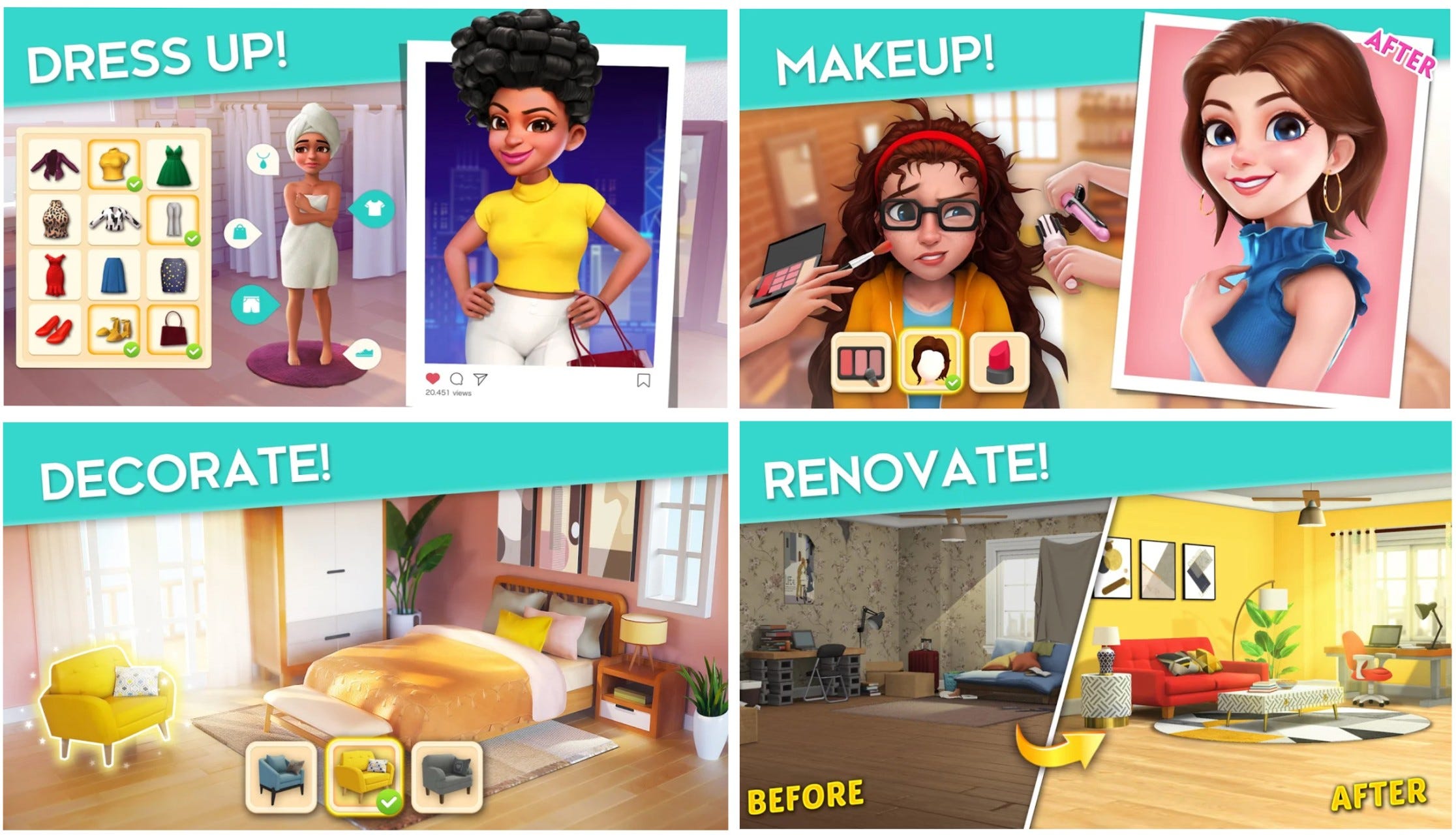
Key Forecast #3: November, 2020
In Part 3 of this series, written in November, 2020, talented Lisa Brunette and I shined light on ever increasing importance of “Story telling” the fourth “Must have” pillar of modern day Match 3's.
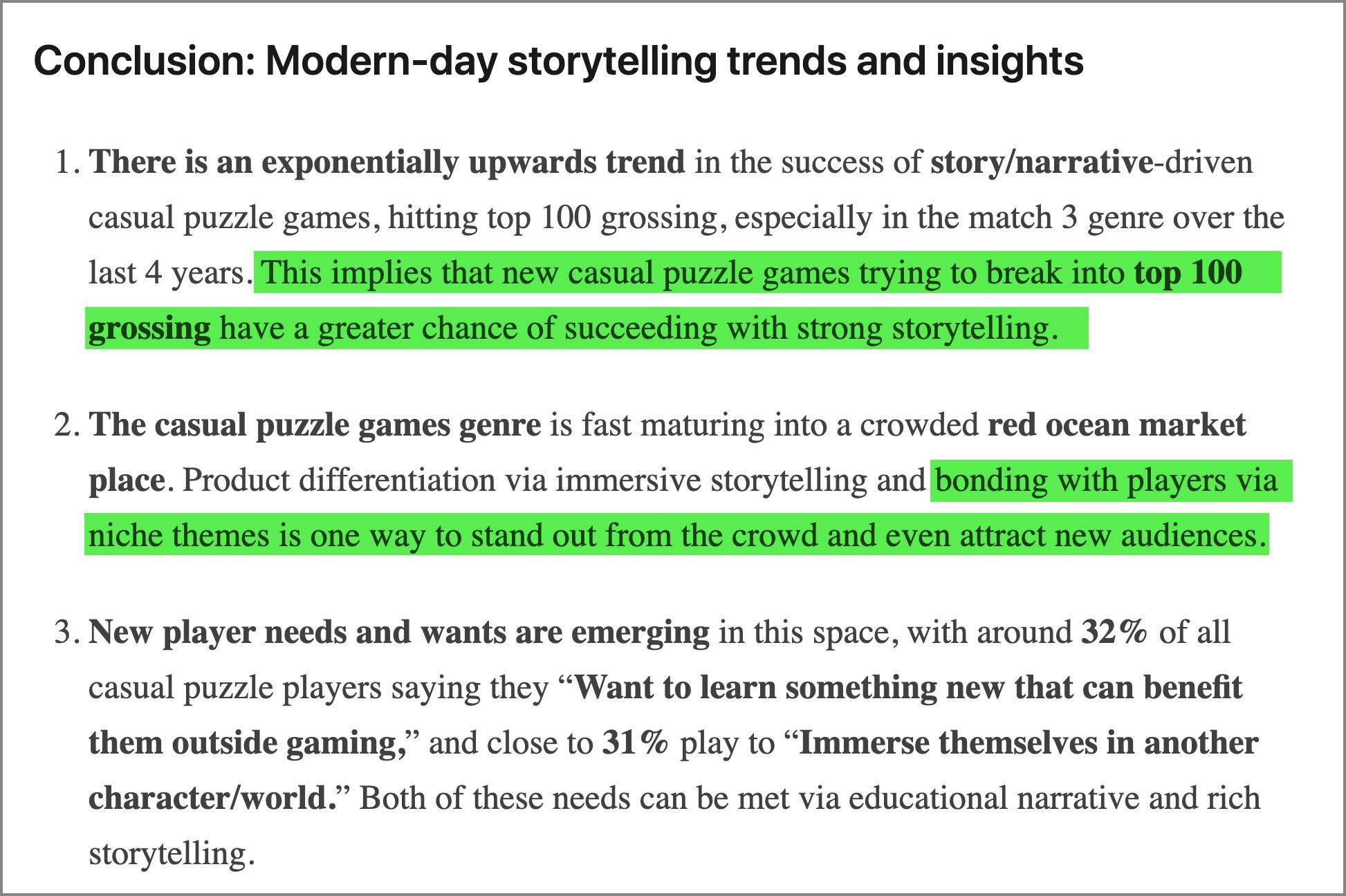
* Above are the conclusions from the third article published in November, 2020
Project Makeover not only hits these notes right by having a ‘Conflict’ driven storyline which enmeshes story with core gameplay but also provides more episodic TV soap like video content which furthers the plot and gives players an idea of future plots, unlike any other Match 3 game yet.
Project Makeover: Deep Dive
Magic Tavern & AppLovin duo, the developers and publishers of Project Makeover are not unfamiliar with Meta Match 3 genre. Magic Tavern is one of the many AppLovin partner studio in which Applovin has a strategic investment.
China based Magic Tavern has previously developed top grossing meta match 3 hits like Matchington Mansion which belongs to second generation of meta match 3 games.
However, with Project Makeover, Magic Tavern is experimenting & pushing the meta match 3 envelope even more and combined with Applovin’s UA machine, it seems to be reaping rich rewards so far
You can say that by now we know what the makeup of a conventional meta match 3 game looks like, but here is why Project Makeover is different:
Key distinctions from conventional Meta Match 3 games.
Key distinction # 1—Rise of the Meta Heavy Match 3: The first difference is unlike conventional meta match 3 games, project makeover is first in its class of a Meta Heavy Match 3 or MHM3 game.
Project Makeover: Match 3 > Meta Match 3 > Meta Heavy Match 3
By lop siding the balance between Match 3 core and number of meta design loops a player has to engage with, player’s identify the game more intensely as dress up/decoration puzzle rather than Match 3 which partly accommodates historical player feedback of wanting more decoration & dress up in puzzle games (though the grind on the Match 3 is still there).
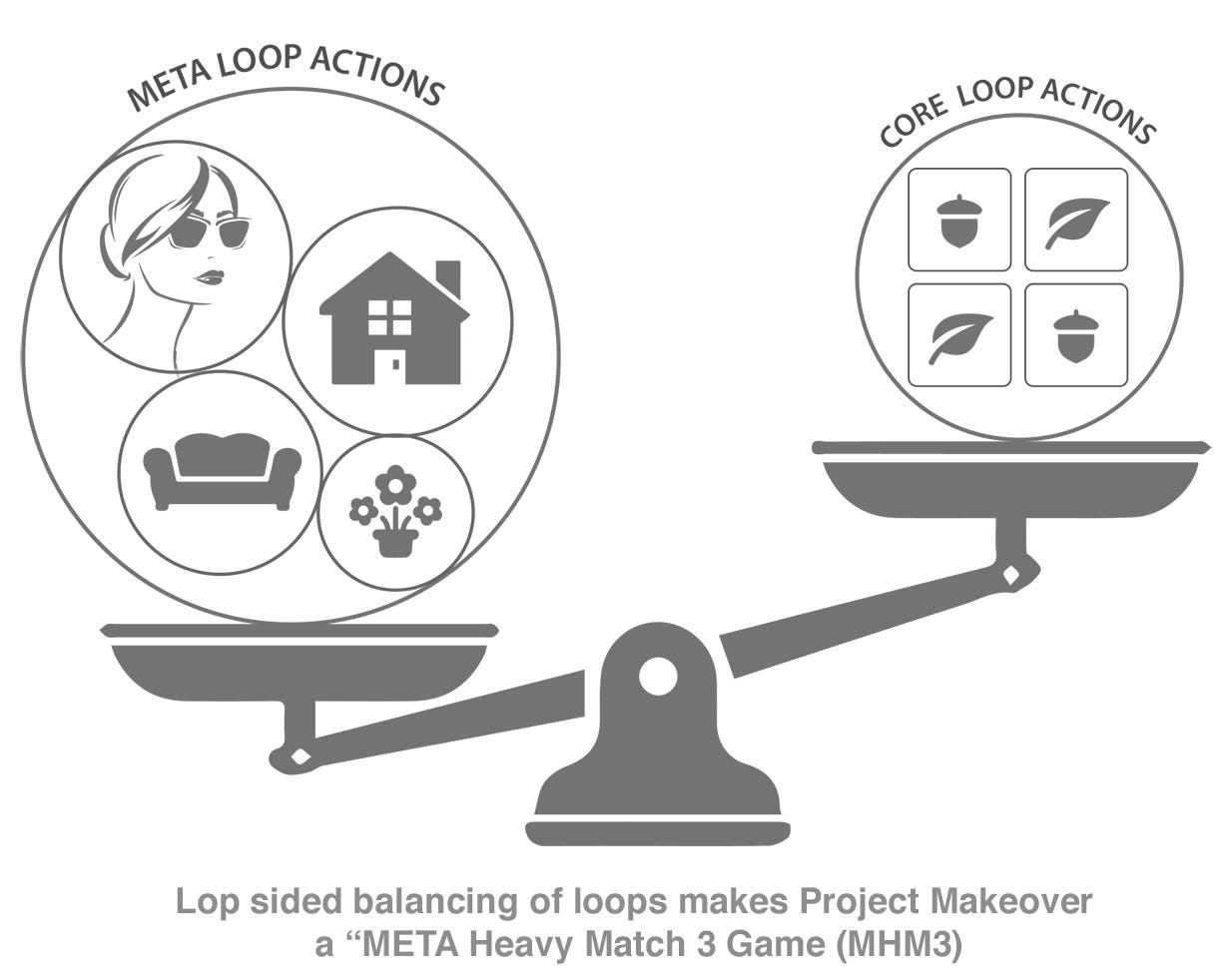
In the words of Magic Tavern’s CEO Charlie Gu, this was intentional by design:

It’s clear from the comment above that by design, the game has enough depth to be a standalone on Fashion Meta side and Match 3 is just a mechanics to generate soft currency.
Theme & gameplay
‘Project Makeover’ the name itself cashes in on a very popular & familiar theme of fashion makeover. While it is not directly based on any real world IP, you can’t help but connect it to “Project Runway”, a very popular American reality television series, that focuses on fashion design. Although the two differ in concept, the underlying theme is fashion makeover and contests.

The choice of not directly using an IP but being close enough in appeal and inspired from a well known American IP cleverly cashes in on familiar theme and popularity, helping widen the UA funnel.
Progression is not saga map (Candy Crush) or 3D map (Gardenscapes/Homescapes) based but chapters based more like ‘Property Brothers’, where players needs to work with new clients and their properties, both of which need makeovers via grooming, dress up, cleaning out the place and adding new decoration/interior design etc. Even though all tasks are mixed up, it surprisingly feels seamless to move from giving a client a new haircut to installing a new bar in their living room, there is no linear order.
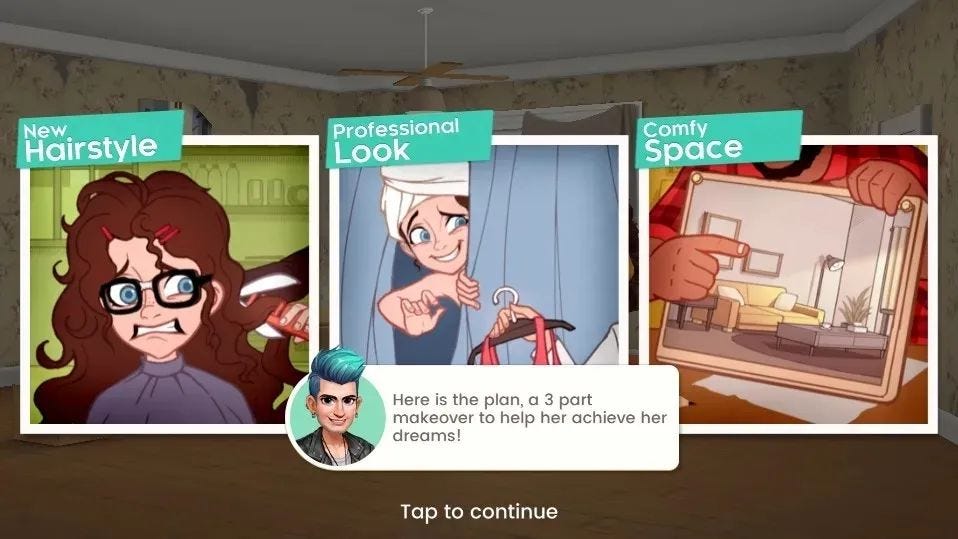
Key distinction # 2—Unanticipated rewards: One of the other key points I have pointed out in my earlier articles was while many Classic and Meta Match 3 games alike are constantly trying to add new meta goals and tasks to aid there core gameplay in order to scale the Meta loops, there is an inherent problem on the rewards side:
Given the relatively simple game economy of puzzle games, they are not able to scale the reward system as effectively as meta goals, resulting inrepetitive rewards that saturate the dopamine hit players get from receiving unanticipated rewards
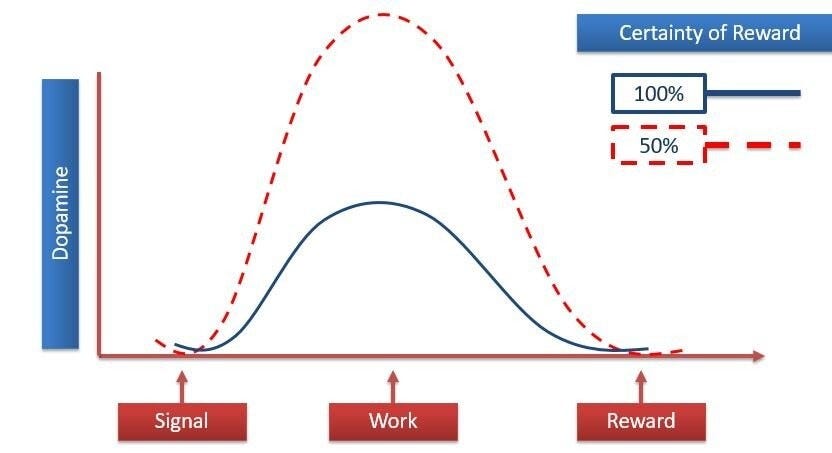
* Predictability of rewards, leads to lower surge in Dopamine over time.
New generation meta match 3 games usually have 2 currencies (hard & soft currency), but even that can pose a problem if you want to eventually scale the meta systems. Unlike mid-core and hard-core games which on top of multiple currencies have resources, tokens, collectibles (I am not even going to get into rarity items :)) which keep users hooked and farming for these rare resources. Note that they have systems for sinking these resources too.
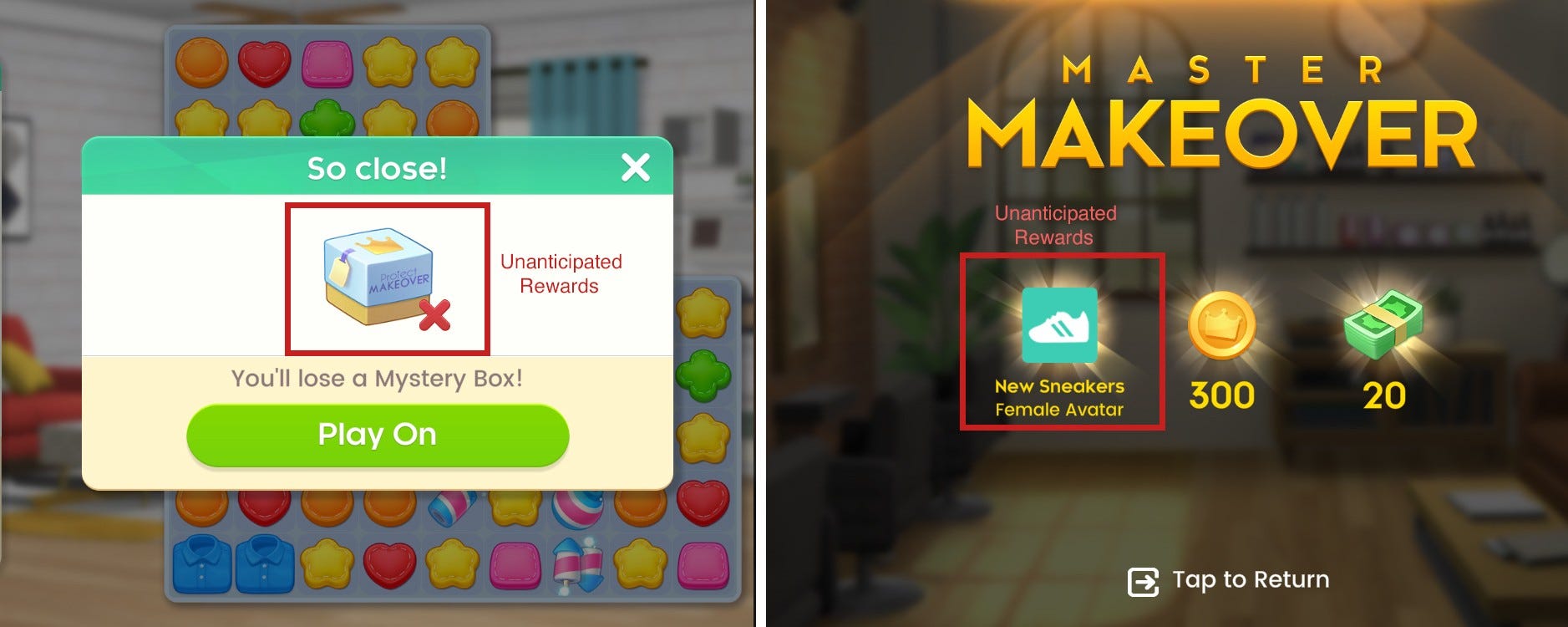
* Frequent dropping of unpredictable rewards in Project Makeover.
Project Makeover seems to be anticipating this problem and in addition to not only giving players regular SC rewards, unanticipated mystery boxes, personal dresses and grooming items are regularly dropped in resulting in a good mix of anticipated and unanticipated rewards.
Repetitive rewards is also probably one of the reasons Playrix is experimenting with ‘Season Pass’ to refresh the user experience and reward players with more exotic unanticipated rewards.

* Premium rewards, collectible pet boosts are attempts to scale the reward system
While perceived value and exact purpose of many items in Project Makeover is not yet quite clear, it seem to be part of users own avatar wardrobe (you can also notice hints of rarity system in the necklace reward item below):
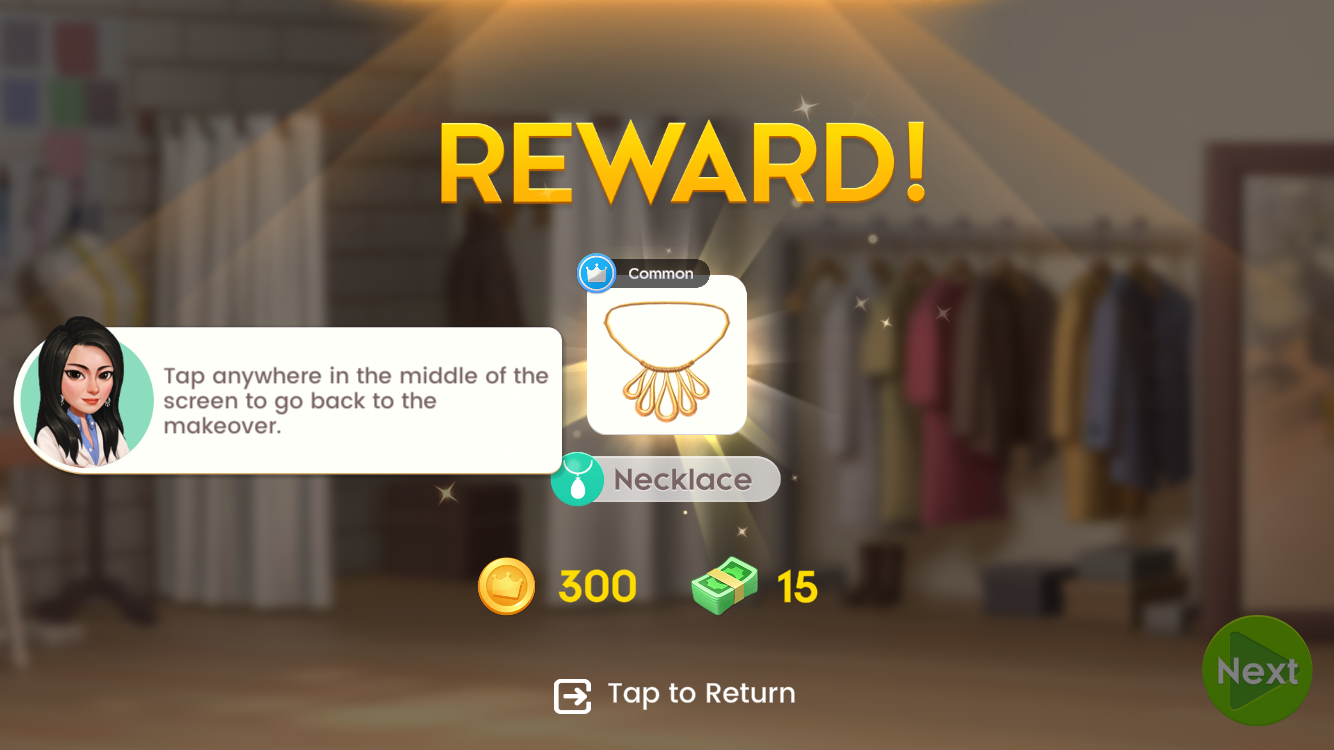
Unanticipated rewards do make the reward loop more unpredictable (higher dopamine hit) and align with the strategy of scaling the reward system in line with Meta system scaling.
Key distinction # 3—Enriched episodic storyline: While it’s not uncommon for the main protagonist in the game to be the player themselves with supporting actors, there is a element of strong conflict with an arch villain right from the get go. This is unlike some of the more conventional narrative driven MM3 games like Lily’s Garden or Garden scapes, where the main protagonist is a butler or a female lead.

There is way more emphasis then on other games in terms of ‘episodic’ video soap like content (seen above) which is unlocked at specific milestones within the gameplay. It is again not very clear if the purpose is to gauge players interest in rich story lines or at later stage have some kind of branching or choice similar to interactive fiction games.
Conclusion
Success by Design or Experimentation?
I believe there is a reason why Project Makeover is more experimental than it’s peers and challenges the existing norms’s of Meta Match 3:
This is not a ‘make or break’ gig for Magic Tavern who are already quite successful with their other games (Matchington Mansion, Tasty Treats, Jolly Jam) and have the financial backing of a powerhouse like AppLovin.
My assumption is that the game started out as a pure experimental prototype, for genre blending and combining more than one Meta type to test the upcoming trends & foresights, gauging player reaction and tweaking on the go—a sentiment that seems to be true from Mr. Charlie Gu’s (CEO Magic Tavern) interview excerpt:

Given the early success of Project Makeover, expect more developers with similar pedigree and resources launching Match 3’s which will go beyond the conventional formula for hits in Q3 to Q4 2021.
It’s highly unlikely we will see any new hit classic match 3 type games appearing in the near future, given the market is already saturated and all new Match 3 developers are putting their bets on exploring and expanding the Meta side.
With ongoing player maturity trends, elder game features (also predicted by DoF) which reduce reliance on content treadmill and leverage repetition of existing content will need to be added to the mix for veteran players (hint: Social Casino & Coin Master style games have already solved this in the casual space).
UA is the muscle when it comes to wooing the masses in Match 3 space. We can and should expect more UA Publishers with satellite studios set up to jump on the bandwagon. Be ready for more mergers & acquisitions!
Core vs Meta dilution will be a continuing trend with more ‘Meta Heavy Match 3’ (MHM3) games making an appearance and trying to carve out a niche, battling for supremacy in the Blue ocean of opportunities that are riding high on the Meta tide.
If you liked this post, please feel free to check out my other game deconstructs at https://www.uxreviewer.com/ or get in touch for consulting queries. Feel free to connect with me on LinkedIn for future articles.
Read more about:
Featured BlogsAbout the Author(s)
You May Also Like








.jpeg?width=700&auto=webp&quality=80&disable=upscale)








